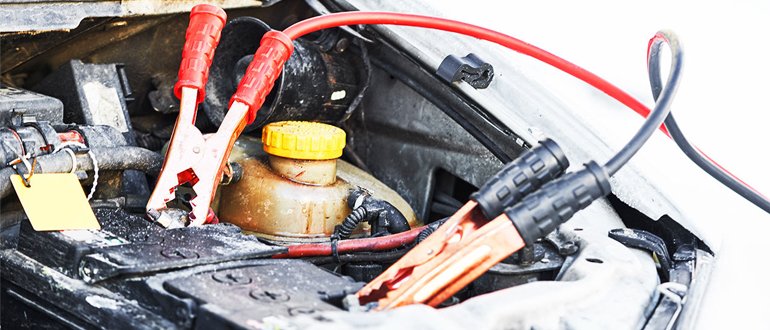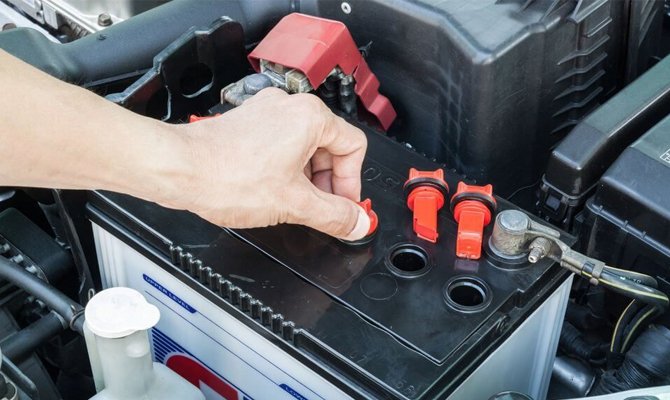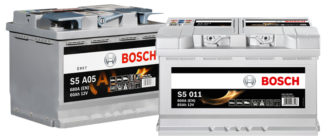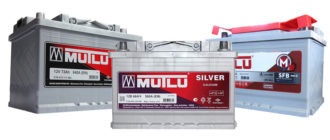Motorists do not always adequately perceive the boiling of electrolyte in the battery. There are situations in which the release of gas from the battery is a normal process. But sometimes boiling electrolyte is a consequence of a serious malfunction. Below we will understand why the battery is boiling and what to do in this case.
Content
How to detect battery boiling
A standard automotive battery with a nominal voltage of 12 volts consists of 6 sections. Each section is a separate cell, an independent battery independent of the others, with a separate electrolyte tank and its own set of lead plates. All 6 sections are connected in parallel to a cluster, which makes up the car battery.
The design of batteries is divided into two types:
- served;
- maintenance free.
The serviced batteries of cars in the upper part have 6 traffic jams: one for each section. These plugs allow you to control the electrolyte level and check its density. To see if the serviced battery is boiling, just unscrew the plugs and look into the holes.
A maintenance-free battery has no plugs. Under normal conditions, it does not need to be replenished, and the electrolyte available inside is designed for the entire battery life. Boiling a maintenance-free battery is accompanied by the release of hydrogen with a characteristic odor or by throwing part of the electrolyte through a vent.
Battery boils while driving
When charging the battery from a stationary device, gas evolution indicates one of the circumstances:
- incorrect charge mode;
- the battery is highly sulfated;
- The battery fully recharged.
If the battery boils while driving, then two problems are most likely: the generator is faulty or the drainage holes in the battery case are clogged. We’ll talk about them.
The generator supplies increased voltage
Potentially, the generator is capable of delivering voltage and amperage much higher than that required to charge the battery. In addition, these indicators depend on the engine speed. To limit the current and voltage supplied to the battery, a regulator is provided on the generator.
The regulator cuts off the voltage at the generator terminals at around 14.4 volts. The charging current depends on the recommended battery capacity for your machine. On most passenger cars, the charging current is limited to 5 amperes.
Violation of the regulator may lead to an increase in voltage or charge current. And if the battery is boiling while driving, it is likely that the problem lies precisely in the voltage regulator on the generator.
Ventilation problem
All lead batteries are equipped with a vent (or holes). Channels for exhausting gases from the battery are located in traffic jams or made a separate conclusion.
Ventilation ducts serve three purposes:
- accumulated gases are removed;
- they condense and return the evaporating water back to the jar;
- protect from penetration into the battery flame when ignited by evaporating hydrogen.
To achieve these goals, the ventilation duct is made in the form of a kind of maze. Closer to the conclusion is the so-called arrester. A flame arrester is a breathable layer of non-combustible material. It is usually polluted.
In summer, especially in the heat, overpressure forms in the battery, which drops in portions, often with the release of antifreeze.Beige acid smudges appear near the vents. This is mistaken for boiling the battery.
The battery boiled on the car while parking
Lead battery can boil for no apparent reason. For example, when the car is parked or even in a state disconnected from the consumer.
In some cases, a boiling battery in the parking lot indicates a dangerous malfunction. We will examine in detail why this is happening.
Short circuit in one or all banks
A short circuit in a lead battery is a fairly common occurrence. Especially in batteries that have been used for a long time or incorrectly.
The essence of the short circuit is as follows: a conductor with a low resistance appears between the negative and positive plates in one or more banks. This could be a breakaway piece of lead plate or high density sludge
Electric current flows intensively between the plates inside the battery. During this process, hydrogen is actively released, which appears on the surface of the electrolyte in the form of gas bubbles. As a rule, one can is boiling.
A short circuit sometimes occurs when a battery error occurs. If for any reason the terminals connect without resistance, the battery will boil sharply and intensely. Sometimes this leads to bloating or explosion of the case, if the gas outlet can not cope with its task.
It is easy to check the battery for an internal short circuit. Connect the battery to the stationary charger. If one can does not boil (or several such cans) - there will be a "shorty".
Incorrect installation of paired batteries
On trucks, often instead of one large-capacity battery, two batteries are installed and connected in parallel. With this connection, the capacitance is added up.
If the batteries are connected in series, the voltage doubles. This is true for trucks, the on-board network of which is designed for 24 volts.
When paired, the battery may boil in several cases.
- Used batteries of different capacities and inrush current.
- An old, worn battery is paired with a new one.
- There are violations in the connection itself.
In the first two cases, more powerful batteries will give a charge to weaker ones. You get a kind of stationary charge. This will naturally cause a boil.
Connection errors are most often manifested in improper circuit assembly. If you mix the poles or close the battery without resistance, the electrolyte will boil.
Battery out of order
The battery will age and become defective over time. Below we briefly analyze the battery malfunctions that cause the electrolyte to boil.
- Strong sulfation. The charging current from the generator is not able to break up the dense sulfate deposits on the plates. The capacity of the plates in this case is reduced, and the current from the generator is supplied with the expectation of a normal battery condition. Instead of charging from the generator, the process of hydrolysis of water begins. And this is the process that causes the release of gaseous hydrogen.
- Electrolyte contamination by sludge. During operation, finely dispersed particles of lead and its oxides accumulate in the electrolyte. These particles are conductors. Distilled water, which initially acts as an insulator and serves only to transfer chemical elements, becomes a conductor. A self-discharge effect occurs in which gases are released from the electrolyte.
- Breakage or deformation of the plates. Strong wear of the battery is accompanied by a decrease in the cross section of the conductors. If one of the plates or the whole cluster breaks or deforms, a short circuit with sharp boiling of the electrolyte can occur in the bank.
The battery can be damaged by thoughtless filling of electrolyte, especially with a high initial density. This will increase the density of the electrolyte in the battery when charging, since decomposed sulfates are converted to sulfuric acid.
Some sulfates will not be able to decompose, even if they did not form a thick insoluble layer, since the electrolyte will be saturated with acid. This will lead to a drop in capacity and boiling due to hydrolysis of water.
How to prevent boiling of the battery
To prevent electrolyte from boiling in the battery, follow these guidelines.
- Keep an eye on the voltage and amperage on the generator. If you suspect a malfunction of the regulator, contact an electrician.
- Charge the battery at least once a year before winter. A regular generator is not able to replenish the battery charge by 100%, and in winter, undercharging will aggravate the situation.
- Rinse the battery at least once every 5 years. A good battery can last up to 10 years if properly serviced.
- Clean the terminals of oxides and monitor the condition of the power wires.
Important! No need to try to squeeze the last juices out of the battery. If the battery is worn out or has serious defects - replace it.
Remember that hydrogen evolution from an electrolyte is a dangerous phenomenon. Hydrogen is explosive. A small spark under the hood is enough - and a fire may occur.










